Cross-country is one of the most exciting disciplines within mountain biking. Races are often close, with elbow-to-elbow action right until the line, and the best cross-country mountain bikes combine everything we love about mountain biking – riding fast, uphill and downhill.
Cross-country mountain bike technology has advanced quickly in the last few years. Cross-country bikes are now lighter, faster and more capable than ever, while many cross-country race tracks have become more demanding at the same time.
If you’re thinking about buying a cross-country bike, then read on for our pick of the best bikes reviewed by our expert testers.
We’ve also put together a buyer's guide so you can learn everything you need to know about cross-country bikes at the end of this article.
If you’re tempted to start riding competitively, we’ve got a separate beginner's guide to cross-country racing.
Best cross-country mountain bikes 2025, as rated by our expert testers
Cannondale Scalpel 1 Lefty

- £8,550 / €9,499 as tested
- Pros: Sorted frame shape shines in every situation; great spec-list; Lefty is smooth and stiff
- Cons: Carbon rims are quite stiff; Lefty might not be for some
Cannondale's Scalpel 1 Lefty is at the sharp end of cross-country mountain bikes, with the frame offering impressive responsiveness and downhill capability.
We found the spec list to leave little to be desired and got along well with the Lefty fork.
This latest generation of Lefty feels smooth and rigid, and the design is almost immune to mud build-up.
On chunkier terrain, the bike eats up impacts well and, thanks to 120mm of travel, it shines on a variety of trails.
Lapierre Prorace CF 9.9
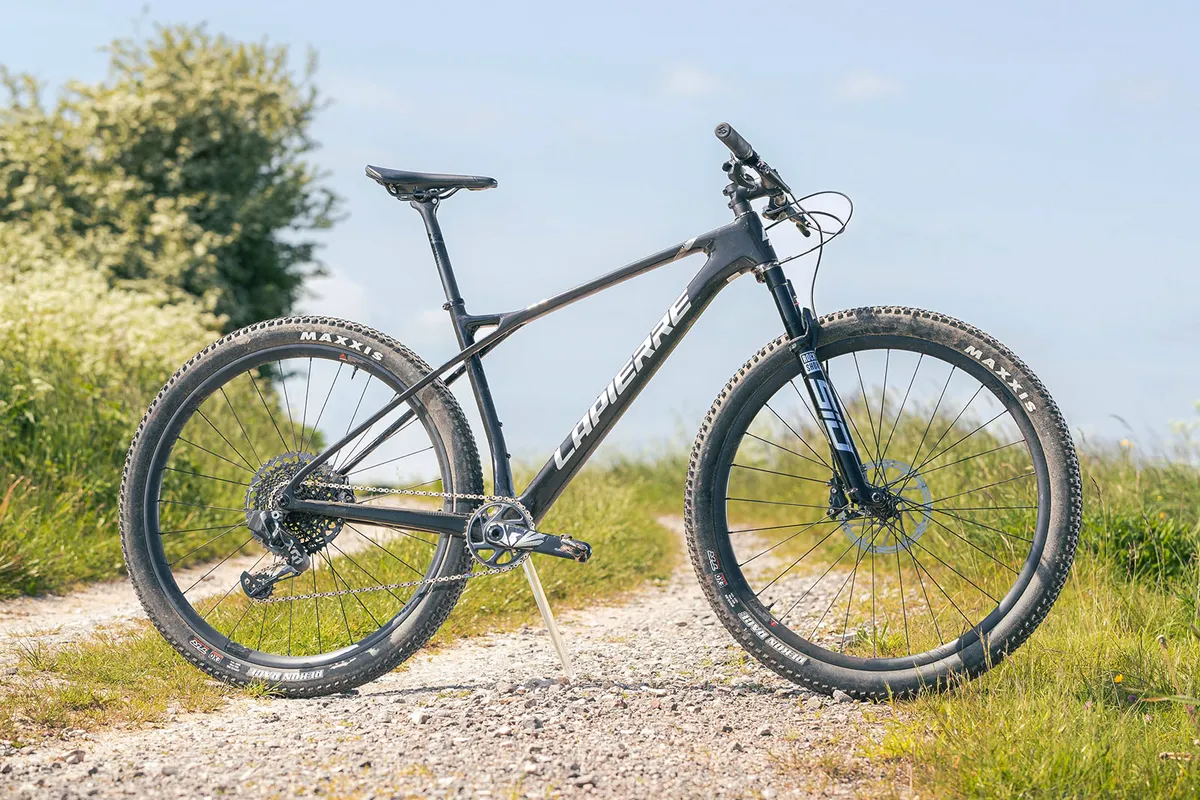
- £5,999 / €6,799 as tested
- Pros: Fast and comfortable; good value; frame compliance adds speed
- Cons: Press-fit bottom bracket limits home mechanics
The Prorace is Lapierre's top-end carbon race hardtail and uses its 3D Tubular concept that the brand has employed on its road bikes since 2015 to boost compliance. This is effectively a triple-triangle design, which sees the seatstays separated from the seat tube.
We found this really helped when climbing because the frame reduces the amount the bike skips and slips around and it smoothes out the trail when descending, too. That said, don't expect it to tame the trails to the extent of a full-suspension bike.
The Prorace handles well and the geometry gives it a fun and engaging ride, even if it's not the most progressive.
This SRAM-heavy build features a RockShox SID SL Ultimate fork up front, a wireless AXS drivetrain and a set of Level TLM brakes.
We really rate the Maxxis Rekon Race tyres, their low-profile, densely packed tread rolling fast on smooth surfaces, balanced with their suppleness.
Trek Supercaliber SLR 9.9 XX AXS Gen 2
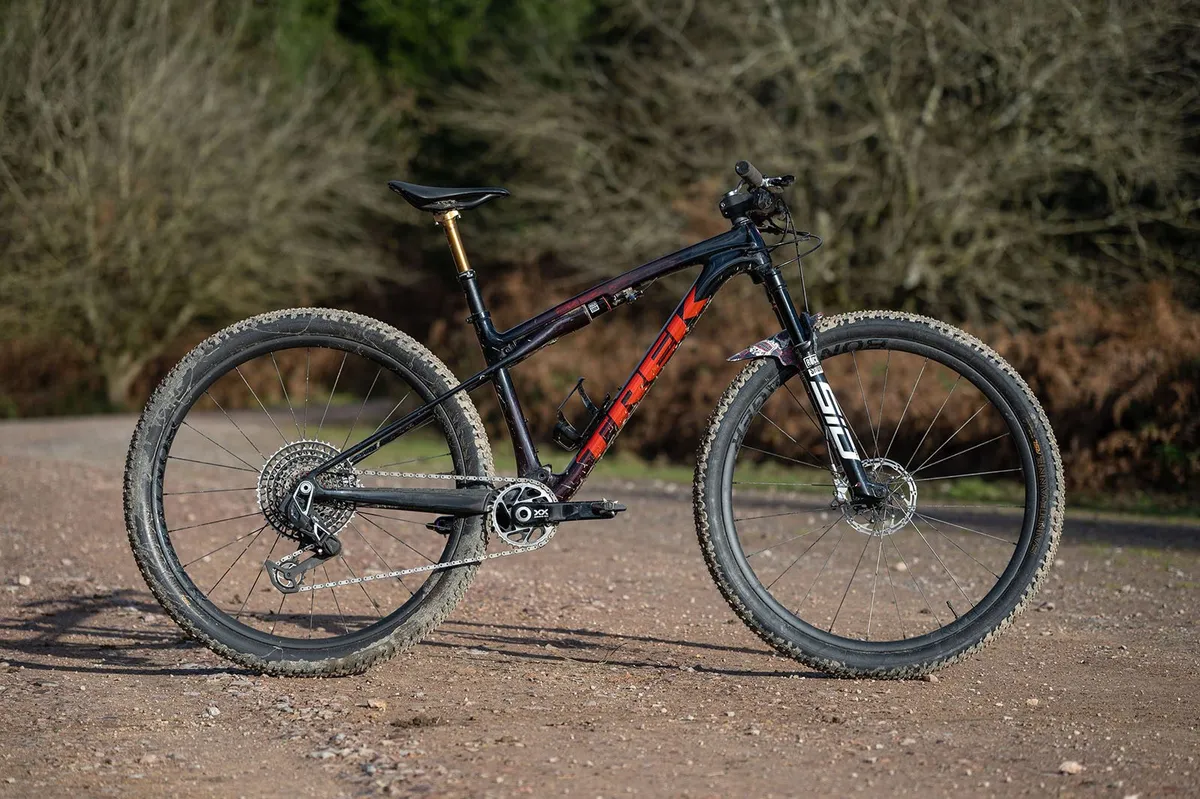
- £10,800 as tested
- Pros: Direct feel with capable geometry; direct feel under power; mutes bumps well
- Cons: One-piece bar and stem plus narrow tyres won't be for everyone
The Trek Supercaliber SLR 9.9 XX AXS Gen 2 is a thoroughbred cross-country race bike, delivering razor-sharp handling and a direct feel under power.
With its IsoStrut rear shock partially hidden in the top tube, the Supercaliber is intended to offer the efficiency of a hardtail with the comfort of rear suspension.
Pair this with the updated and more capable geometry and you have a bike that balances efficiency and composure.
If you want a top-spec race bike for more demanding trails, the Supercaliber would be a great choice, but you might want to swap in some wider tyres.
YT Izzo Uncaged 7
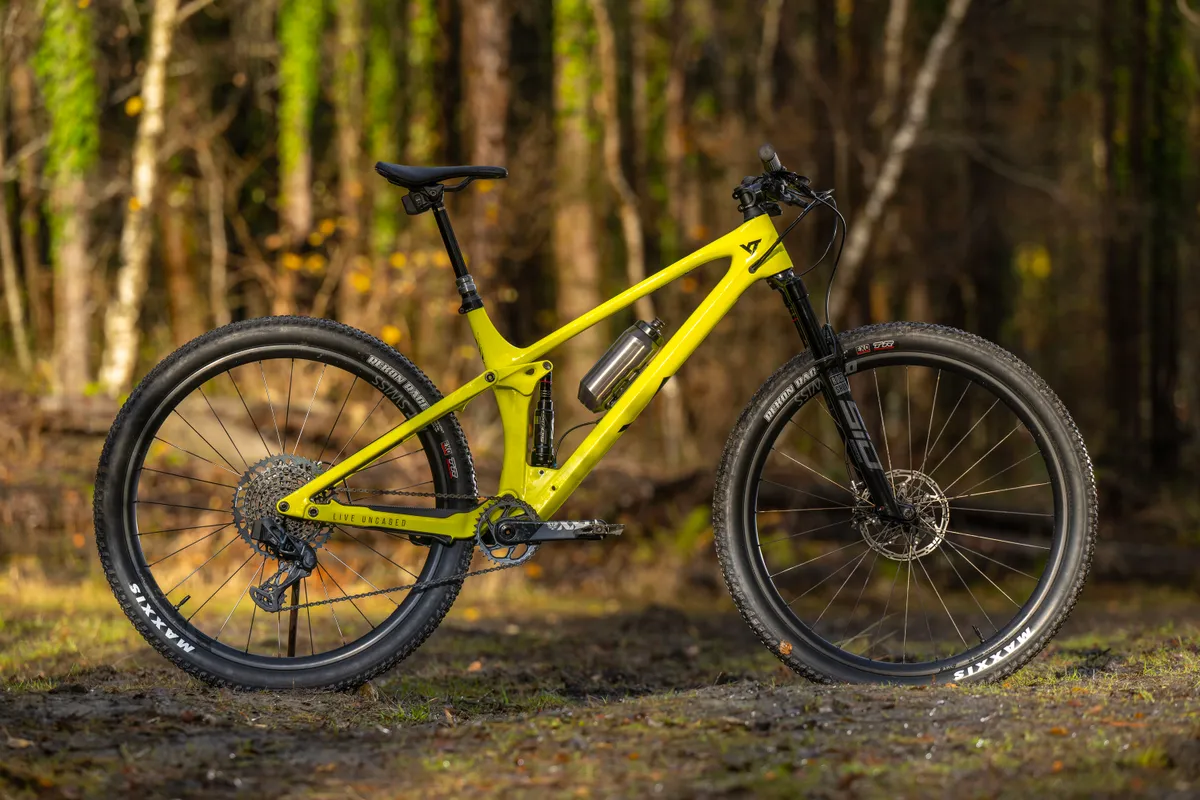
- £6,299 / $6,499 as tested
- Pros: A riot of a descender that still climbs like the best of them; makes the most of YT’s signature value for money
- Cons: Direct sale won't appeal to all
With the Izzo, German direct-to-consumer brand YT has entered the world of XC with a bang.
Packing 120mm of suspension controlled by a four-bar linkage, the Izzo Uncaged 7’s carbon frame also features adjustable geometry.
A flip chip offers 0.4 degrees of adjustment to the head and seat tube angles and a 5mm bottom bracket height adjustment, enabling riders to set their bike up to suit a variety of trails.
The Izzo’s geometry is very progressive, with a 66.5-degree head angle and 77.5-degree effective seat tube angle in the slack setting. The reach comes in at 475mm in size large.
As we’ve come to expect from YT, the spec offers incredible value for money. The Izzo is equipped with top-of-the-line RockShox SID and SIDLuxe Ultimate suspension, SRAM G2 Ultimate brakes and a wireless XX1 AXS drivetrain.
On the descents, the YT’s balanced suspension and capable geometry make it a riot to ride fast and it comfortably takes on trails well above its pay grade.
Despite packing more travel than most other XC bikes, the Izzo also excels on the climbs, offering a supportive pedalling platform and fast-rolling performance.
Specialized Epic 8 Pro

- £8,000 as tested
- Pros: Power transfer feels incredibly efficient; handling is trail bike-esque
- Cons: Round tyre profile can be unsettled on some surfaces
The Specialized Epic has been a benchmark for cross-country bikes for a long while, with the latest generation setting the bar even higher.
We were impressed by the bike's ability on almost all trails, and found the handling and suspension feel similar to a trail bike.
The three-mode lock-out performs well, with the middle mode acting as a great intermediate for flat pedalling.
Specialized's Fast Trak front tyre makes for some squirrelly moments, with the round profile making the front of the bike dive when cornering.
BMC Fourstroke 01 Two AXS
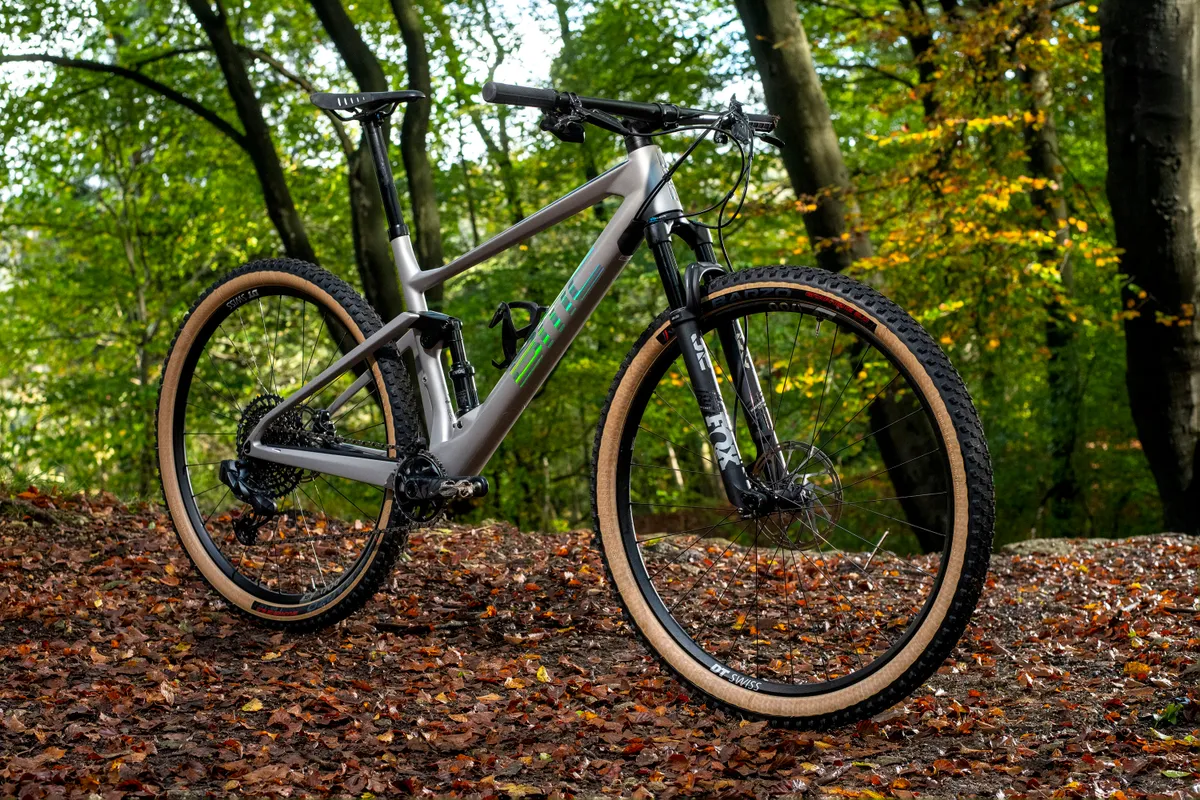
- £8,300 / $8,999 / €8,499 as tested
- Pros: Decent geometry and an eager climber; great suspension feel
- Cons: Stock tyres are poor; dropper not as responsive as traditional ones
BMC’s Fourstroke piloted Tom Pidcock to Olympic Gold. On our trails, it made for a fairly poised race-ready ripper.
The Fourstroke’s geometry is up-to-date and it climbs with near-impeccable pedalling manners. It pumps through rolling terrain well and the bike eggs you on to accelerate and push yourself towards your limits on a wide variety of trails.
The SRAM GX Eagle AXS drivetrain performed flawlessly and the Fox suspension package felt supple.
However, it does require a tyre change to fully unlock its potential because the stock Vittoria Barzo tyres made the ride feel nervous and skittery. We’re not fully sold on BMC’s RAD integrated dropper seatpost, but admittedly it looks aesthetically pleasing.
Cannondale Scalpel HT Carbon 4
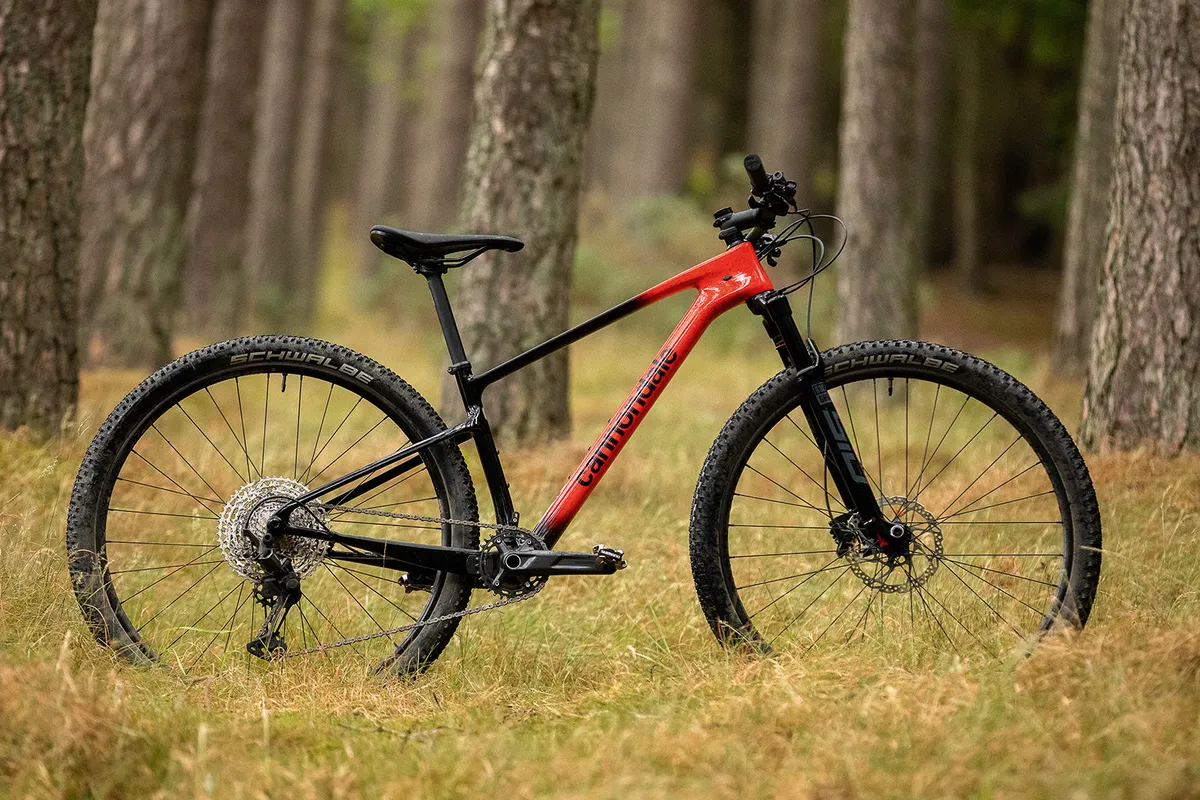
- £2,600 / $2,300 as tested
- Pros: Impressive all-round capability; good spec for the price tag
- Cons: Seat tube bottle boss position limits post-insertion depth
The Scalpel HT Carbon 4 is the most affordable bike in the Scalpel line-up, aimed at the gnarlier end of cross-country.
Cannondale has evolved the typical XC race geometry by offering slacker head angles, giving the Scalpel HT handling character similar to an enduro bike. Steeper seat tube angles retain climbing ability and we were impressed by the traction provided by the zones in the rear triangle.
The Scalpel HT Carbon 4 features a RockShox SID SL fork and uses both Shimano XT and Deore drivetrain and brake components.
Giant Anthem Advanced Pro 29 1
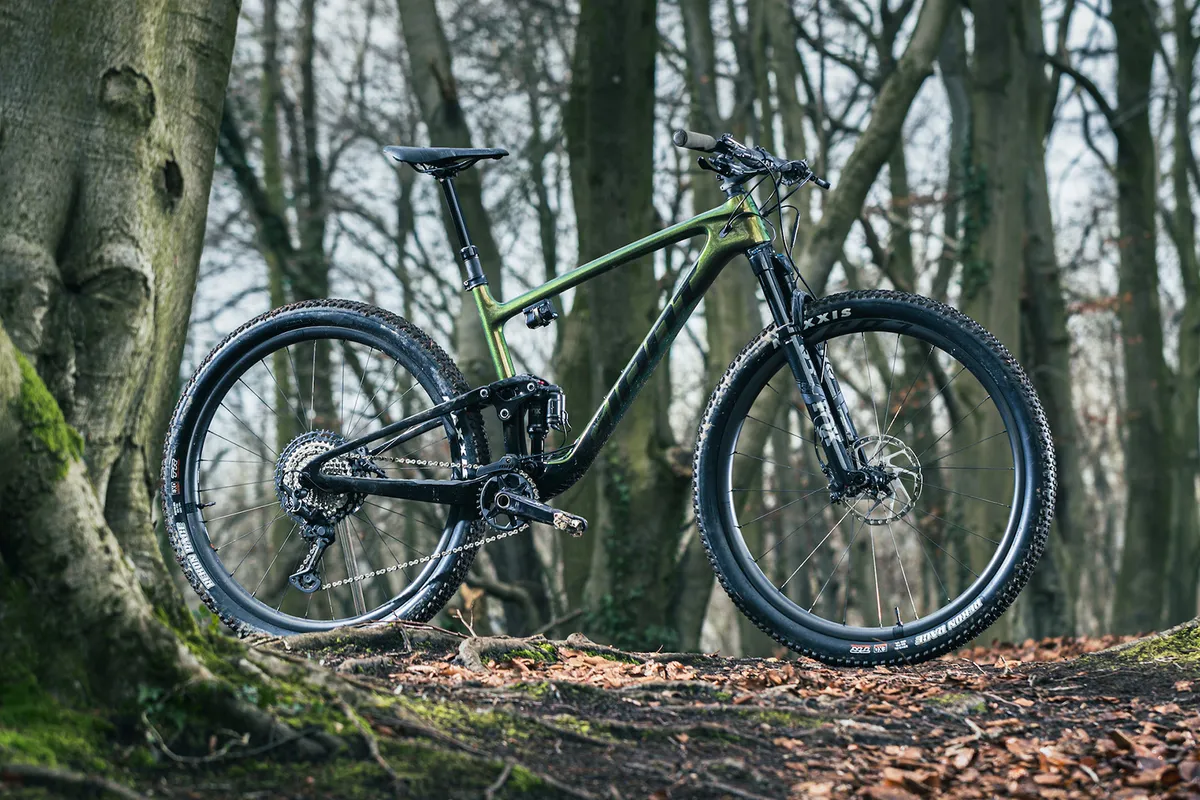
- £6,999 / $7,500 / AU$9,099 as tested
- Pros: Excellent modern geometry; agile yet confident handling
- Cons: Harsh cockpit; Live Valve takes time to set up right
The Giant Anthem saw a refresh in late 2021 with updated geometry, a longer 110mm-travel suspension fork, and flexible seatstays and chainstay to simulate the articulation of a pivot point.
This particular model uses the Fox Live Valve suspension system. The system has electronic link sensors on the fork and frame, which automatically open and close the fork and shock’s compression circuit when a bump is detected.
With its modern geometry, the bike climbs reasonably well, although there is some bob. Heading downhill, the bike feels stable and secure over loose surfaces with supple suspension (Live Valve settings-dependent).
The Anthem is equipped with a Shimano XT drivetrain and brakes, which offer next-to-identical performance to Shimano XTR. The bike has own-brand carbon wheels and handlebars.
Intense Sniper XC Expert
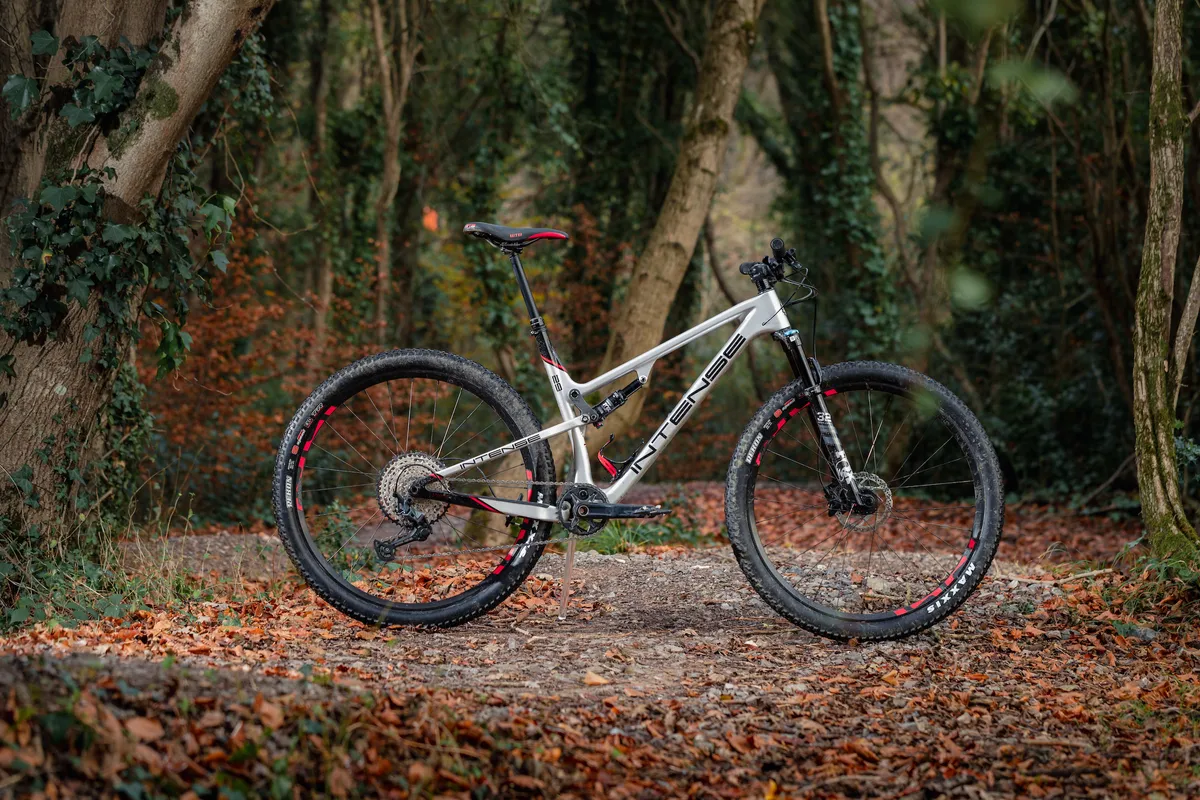
- £3,699 as tested
- Pros: Composed on climbs and descents; carbon-everything frameset
- Cons: Dropper post lever prevents remote lockout option
Although Intense is best known for its gravity-oriented bikes, the Sniper XC has an engaging ride quality that’s fast around a cross-country race course.
The geometry is nice and modern, with a long 468mm reach and a 67.5-degree head tube angle, which is slack for a cross-country bike.
The Sniper climbs well, bearing in mind there is no remote lockout. There is some pedal bob though, especially when sprinting.
The bike descends assuredly, offering a smooth ride on rough descents while maintaining stiffness.
Shimano’s third-tier SLX drivetrain performs excellently, as does the Fox Performance suspension. The bike comes with a dropper seatpost.
Merida Ninety-Six RC 9000
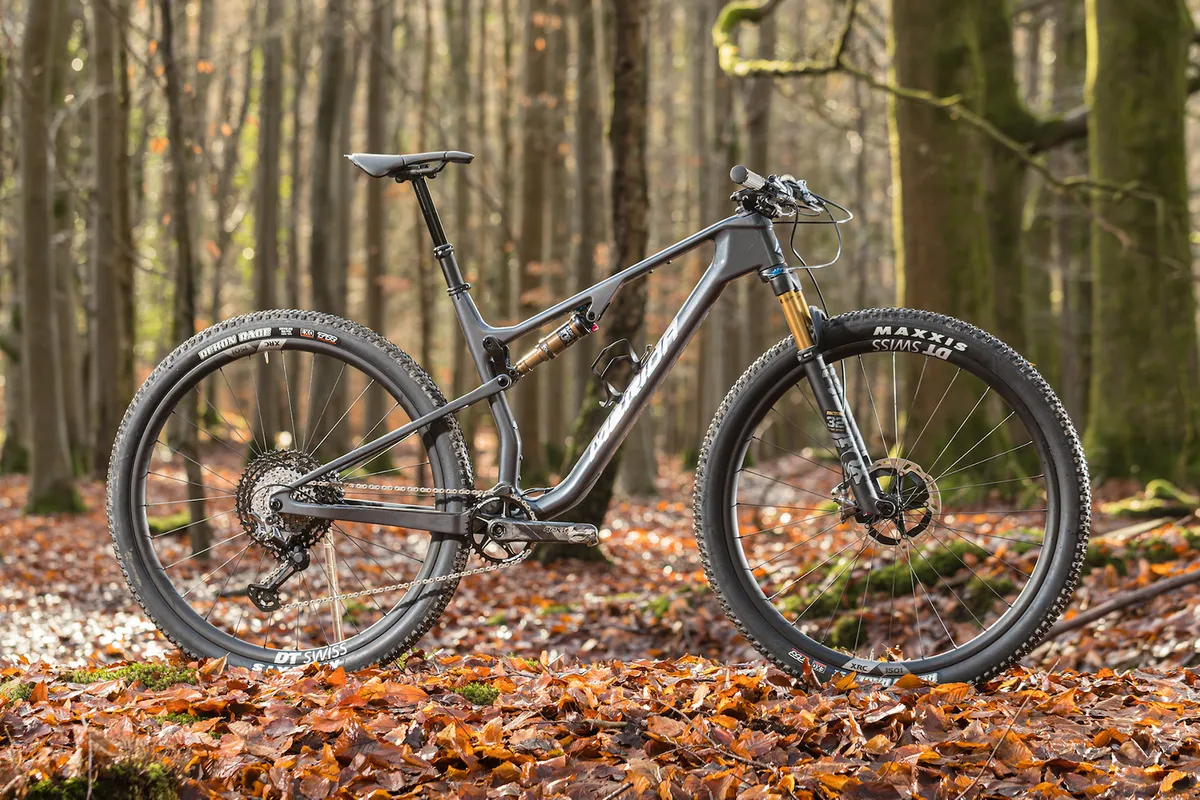
- £7,300 / €8,900 as tested
- Pros: A classic-feeling race bike with inspired handling manners; great spec choices
- Cons: Narrow bar; not the most supportive suspension
Although Merida’s Ninety-Six seems conventional with its 100mm of suspension travel front and rear, it features trail-friendly geometry with a 68.5-degree head tube angle and a steep 76-degree seat tube angle.
The bike features a Shimano XTR groupset, Fox Factory-level suspension and own-brand finishing kit.
We found it to be a rocket ship up the climbs, with the active suspension helping you maintain speed up rough and loose climbs. It has plenty of character through corners thanks to its reactive steering.
On descents, the Ninety-Six is slightly more nervous than the long reach would suggest.
The rear shock can lurch deeper into its travel than expected.
Mondraker F-Podium RR

- £7,699 / $7,999 as tested
- Pros: Sorted geometry gives confidence on any terrain; makes ease of steep trails
- Cons: Not the smoothest suspension on choppy terrain; shock not the most accessible
We found the F-Podium RR impressive when pointed down steep trails, with the geometry bolstering confidence and making easy work of technical tracks.
On rougher trails, the suspension damper isn't quite as smooth as competitors, offering a rough feeling through the bike – a softer shock tune may combat this.
The bike doesn't come with electronic shifting, which is surprising for its price range, but the rest of the kit leaves little to be desired.
Pivot LES SL 29 Pro XT/XTR
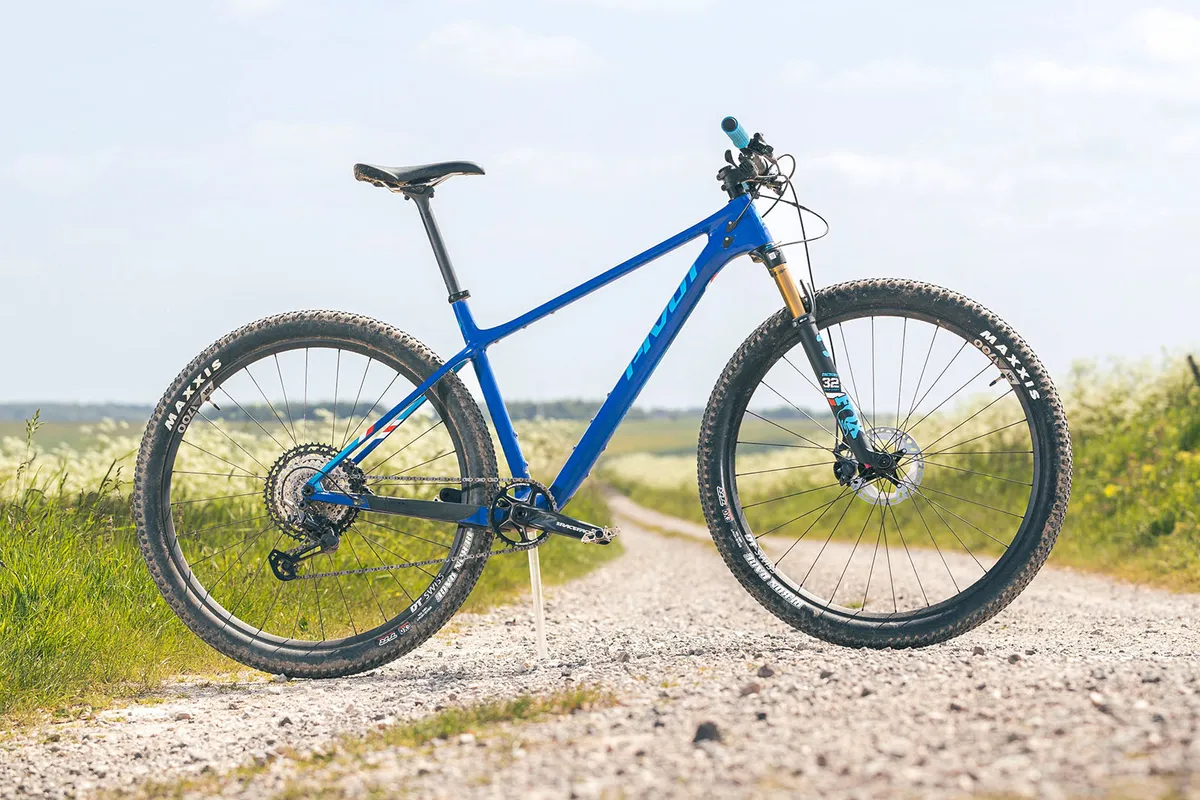
- £6,750 / $6,199 as tested
- Pros: Geometry inspires confidence; covers ground fast; playful handling
- Cons: Overall value isn’t the best; press-fit BB won’t appeal to all
Pivot's LES SL is a carbon race bike with clean lines and an innovative carbon construction, in that the frames are moulded from the inside out to reduce imperfections. The carbon frames have also been optimised to provide the same ride feel, whatever the size.
The bike climbs well, with the frame feeling stiff but not to the point of being harsh. The winning geometry also means there's room to shift your weight around to maintain traction.
Heading down the other side, the LES SL handles well, thanks to its moderately long reach, head tube angle and 60mm stem. It holds its speed well over chattery trails and the handling feels precise.
The LES SL is adorned with a host of Pivot-branded kit, a Factory-level Fox 32 StepCast fork and a Shimano XT groupset, with an upgraded XTR rear derailleur.
The only real criticism we can level at the bike is the spec doesn't represent the best value for money when compared to its competitors.
Scott Spark RC Team Issue AXS
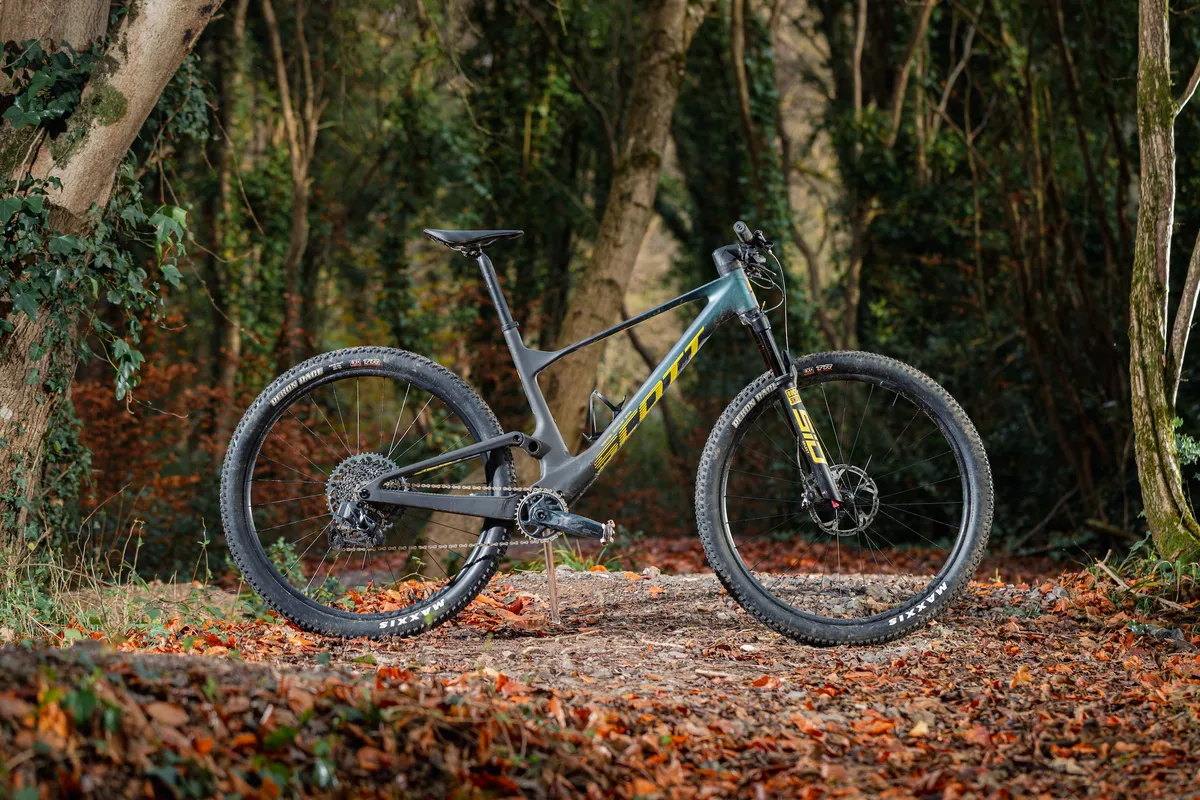
- £4,699 as tested
- Pros: A radical but modern XC bike with an internal shock layout; bang up-to-date geometry
- Cons: Integrated shock won't be for everyone
Scott’s latest Spark RC underwent quite a radical update, getting a new internal shock suspension layout and upping the travel to 120mm at both ends.
Despite the shock not being visible, setting up the Spark was incredibly easy and there’s a sag meter printed on the non-driveside seat tube and seatstay junction for guidance.
The updates result in a bike that’s dominant on the descents, despite not being specced with a dropper seatpost or particularly wide handlebars. Grip is excellent uphill and Scott’s TwinLoc remote lockout lever is incredibly easy to control from the bar.
The bike is specced with a SRAM GX Eagle AXS wireless electronic groupset, which impresses all who test it, and the suspension comes courtesy of RockShox, with Scott’s in-house brand, Syncros, featuring heavily for the rest of the build.
Specialized S-Works Epic World Cup
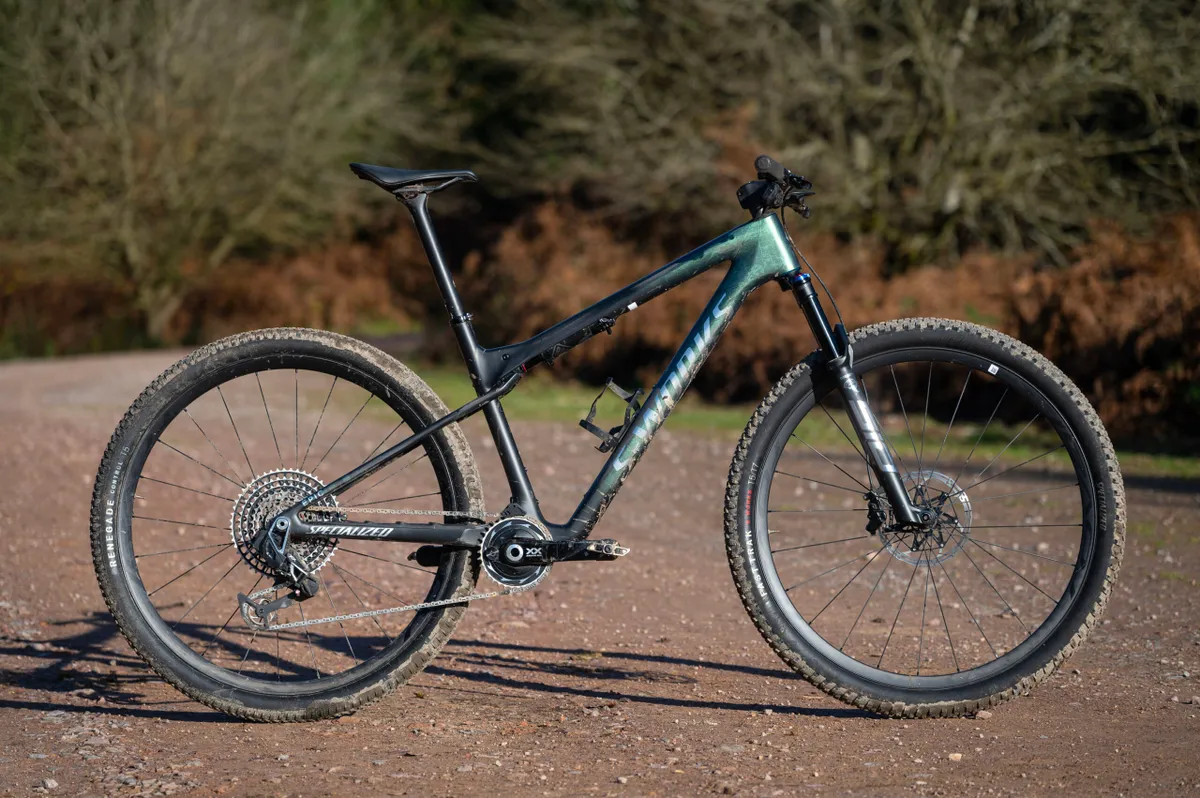
- £12,000 as tested
- Pros: Reacts to pedal input like a hardtail; modern geometry
- Cons: Performance comes at the cost of versatility
The Specialized S-Works Epic World Cup is unapologetically XC race-focused.
The bike is an exceptional climber, thanks in part to the tyres and Roval Contact SL wheelset. Pedal bob is virtually eliminated when you run the rear shock in its ‘No Gulp’ setting, making the Epic feel a lot like a hardtail.
The 75mm of rear travel takes the sting out of descents rather than flattering your skills, but with a bit more thought, the bike can certainly compete against 120mm-travel XC race bikes.
This isn’t a hugely versatile bike. The suspension and harsh cockpit will leave you wanting a more forgiving ride when cruising around. But if you’re heading off to a race, this bike will reward your full-gas efforts.
Yeti ASR T3

- £8,399 / $8,600 as tested
- Pros: Agile handling; carries speed well on rolling terrain; head-turning looks
- Cons: Rear suspension can get overwhelmed on rough trails
Yeti's ASR T3 is the brand's first XC bike in 10 years, and it lives up to the heritage of old.
The bike handles incredibly well, with agile handling and efficient power transfer making it good fun on mellow trails.
It feels very much suited to track racing and once pointed down a black-graded trail, the rear shock is quickly overwhelmed with large hits giving it no time to recover.
Cross-country mountain bike buyer's guide
What is a cross-country mountain bike?

A cross-country mountain bike is designed to cover a variety of off-road terrain as quickly as possible. It needs to be equally capable of climbing and descending, while also being efficient when pedalling on flatter terrain, or picking a line through tight, twisting singletrack.
Cross-country bikes are usually the lightest type of mountain bike you can buy for a given price and are often made from carbon fibre, although more affordable aluminium options are also widely available.
XC bikes have less suspension travel than trail bikes and enduro bikes, so won’t be as adept on very steep, rough and technical trails. That being said, in the right hands – for example, a professional rider – a cross-country bike is surprisingly capable.
While cross-country bikes are designed mainly for racing, they’re equally at home on mellower trails, or a big day out in the hills when you’ll value the all-round capability of an XC bike on varied terrain.
What about downcountry?
Before we go any further, we need to quickly mention downcountry bikes.
Downcountry is a fairly new term within mountain biking. In essence, it refers to bikes that blur the line between dedicated cross-country race bikes and more forgiving trail bikes.
A downcountry bike will have a little more suspension travel than a cross-country race bike; normally in the region of 120 to 130mm at the front and 110 to 115mm at the rear.
It will also have geometry that leans more towards descending performance than pedalling efficiency. For example, a slacker head angle, longer reach and longer wheelbase.
Finally, the componentry will be chosen with descending in mind, with more powerful brakes, larger/grippier tyres and a dropper post.
For riders who want a fast, versatile bike for a variety of terrain, downcountry bikes fill that gap. If this sounds like the type of bike for you, then check out our buyer’s guide to the best downcountry mountain bikes.
Hardtail vs full-suspension for XC racing

The first decision you need to make when buying a cross-country bike is whether you want a hardtail or full-suspension bike.
A hardtail only has suspension at the front through the fork, while a full-suspension bike has suspension at the front and rear.
There are pros and cons to each for cross-country riding, and this will influence which option will be best for you.
Hardtail bike for XC riding
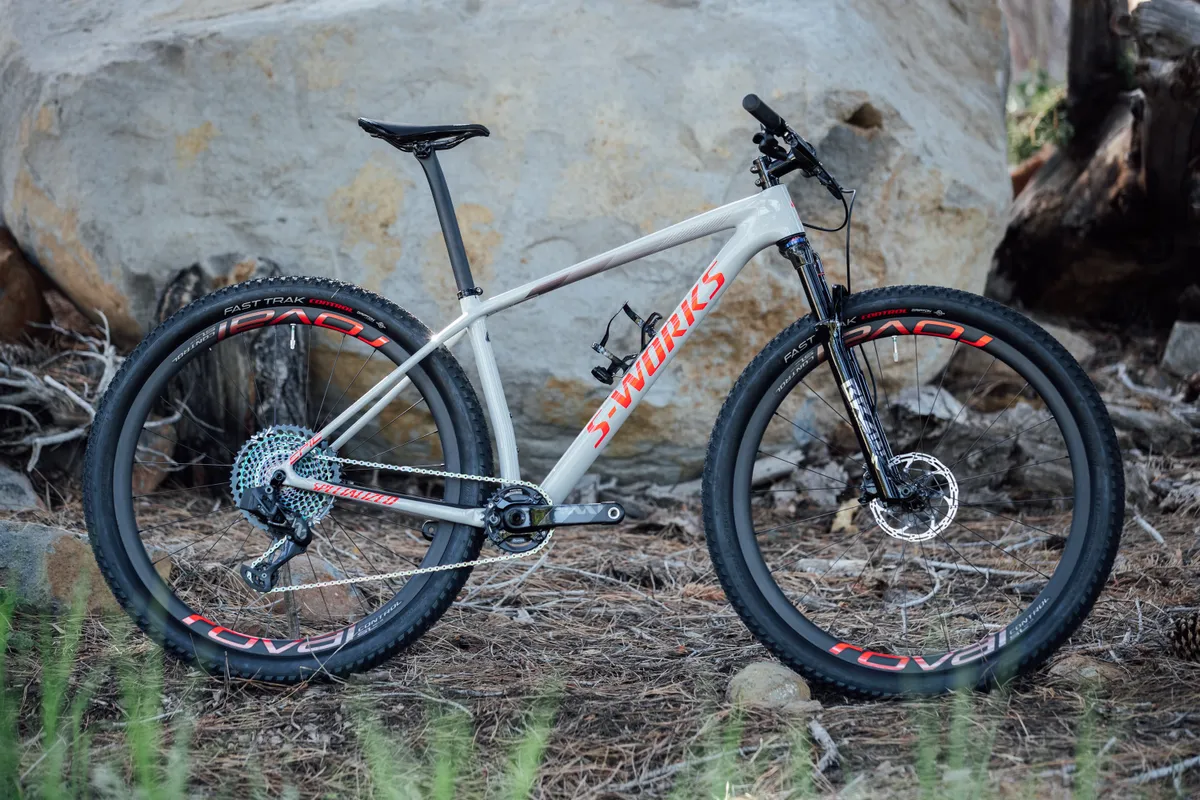
For a given spec, a hardtail will nearly always be lighter than a full-suspension bike. So if you live somewhere hilly, or just prioritise climbing performance above all else, then a hardtail could be a good option.
With suspension only at the front of the bike, a hardtail is simpler in its design, making it easier and cheaper to maintain than a full-suspension bike.
Finally, for the same cost, a hardtail can often come with a better spec than a full-suspension bike, so may require less, if any, upgrading in the future.
Full-suspension bike for XC riding
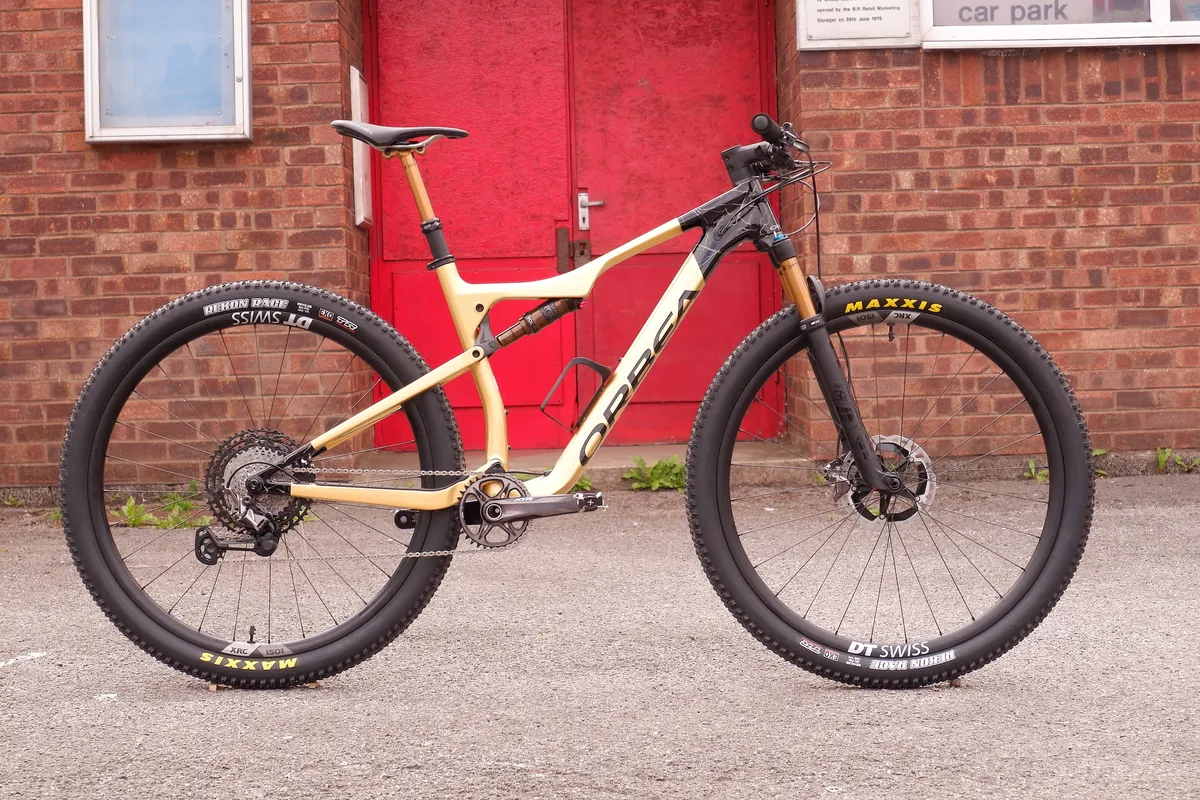
While a hardtail will typically be lighter, more affordable and simpler to maintain than a full-suspension bike, when it comes to descending performance, a full-susser will win every time.
They’re also more comfortable than a hardtail, which is especially important for longer rides or races.
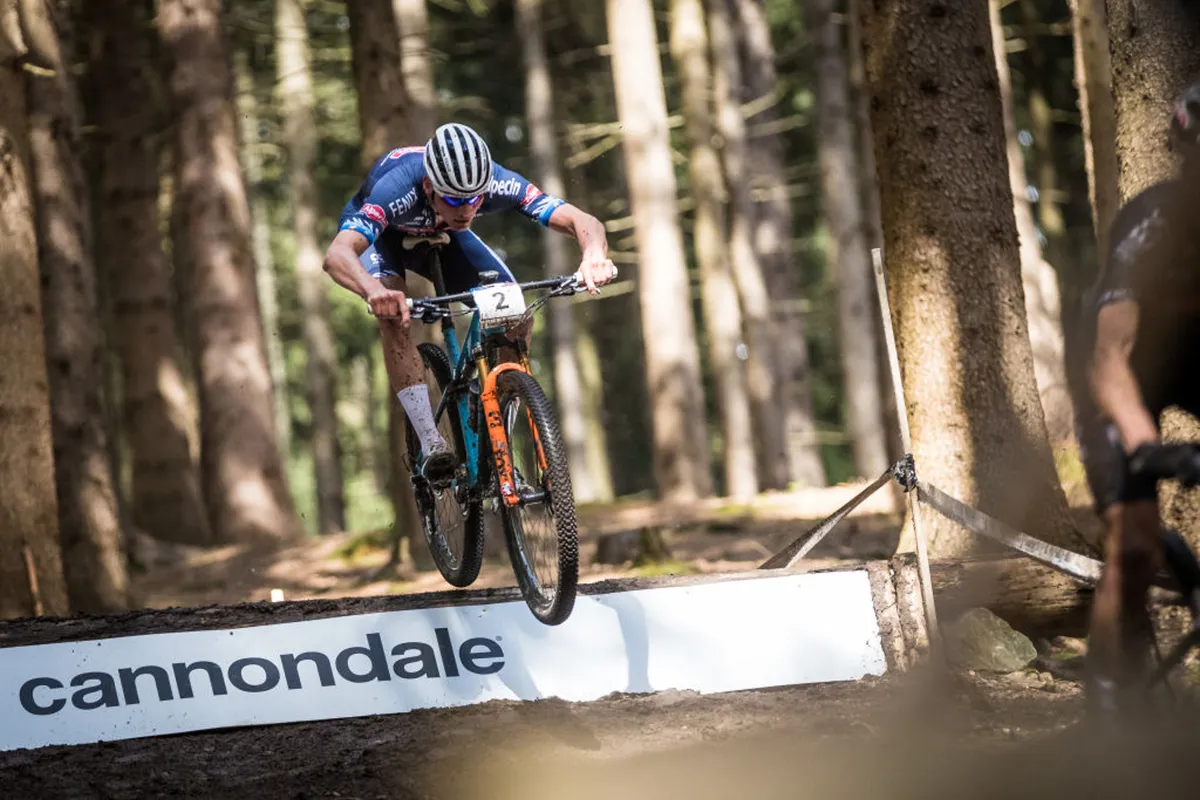
On rough, flat terrain, full-suspension bikes will often enable you to pedal more efficiently because the rear suspension soaks up any bumps in the ground.
As we’ve already mentioned, they will usually be heavier. However, this gap has narrowed over recent years, and at the top end, they may only weigh a kilo or two more than a hardtail.
For many riders, the relatively small weight penalty of a full-suspension bike is worth the benefits of better descending, more comfort and increased pedalling efficiency on rough terrain.
What to look for when buying a cross-country bike
Now you’ve decided between a hardtail and full-suspension bike, here’s what else you need to look out for when buying a cross-country bike.
Geometry

Cross-country bikes have traditionally had ‘steeper’ geometry figures than trail or enduro bikes. The logic was that the ‘quicker’ handling made cross-country bikes better in tight singletrack and elbow-to-elbow racing.
However, modern cross-country racing now takes place on much tougher courses, which are equal parts tricky descents and lung-searing climbs, so geometry has had to keep up with this trend.
Head angles as slack as 67 degrees and reach figures once only seen on trail bikes are not uncommon on modern cross-country bikes.
They will also have steeper seat angles of around 74 to 75 degrees, which puts a rider's hips in a better position over the bottom bracket for pedalling efficiency.
Prime examples of modern cross-country geometry are the Specialized Epic and the BMC Twostroke.
Frame material
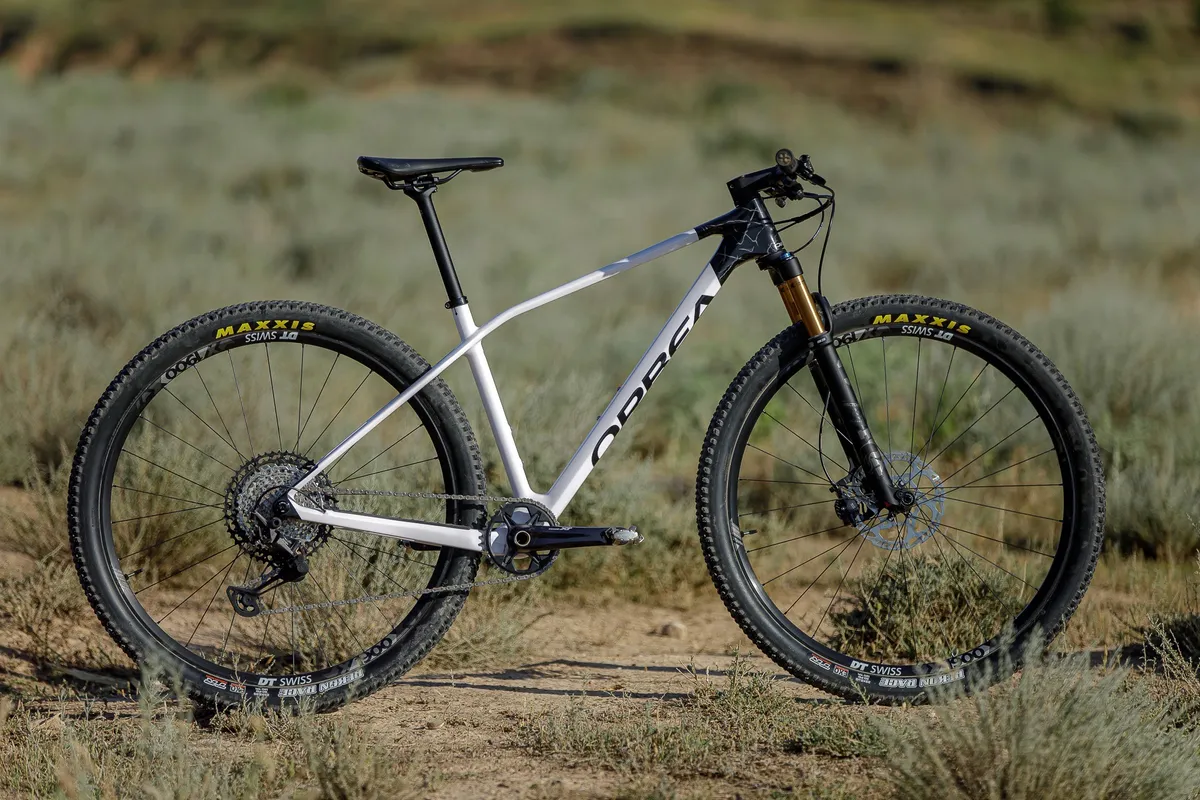
There are two main frame materials to choose from: carbon fibre and aluminium.
When it comes to professional racing, every rider will use carbon fibre; it’s lighter than aluminium and can be designed to be stiffer, so makes perfect sense if all you're worried about is going as fast as possible, with little concern for budget.
The downside of carbon is it’s more expensive than aluminium, and in certain situations, more susceptible to crash damage.
Aluminium is more affordable and better at resisting damage from certain impacts. This makes it ideal if you’re looking to save money or want your bike to be as durable as possible. The latest aluminium frames can be impressively light, too.
Titanium and steel cross-country bikes do exist, but these are in the minority.
How much does a cross-country mountain bike weigh?
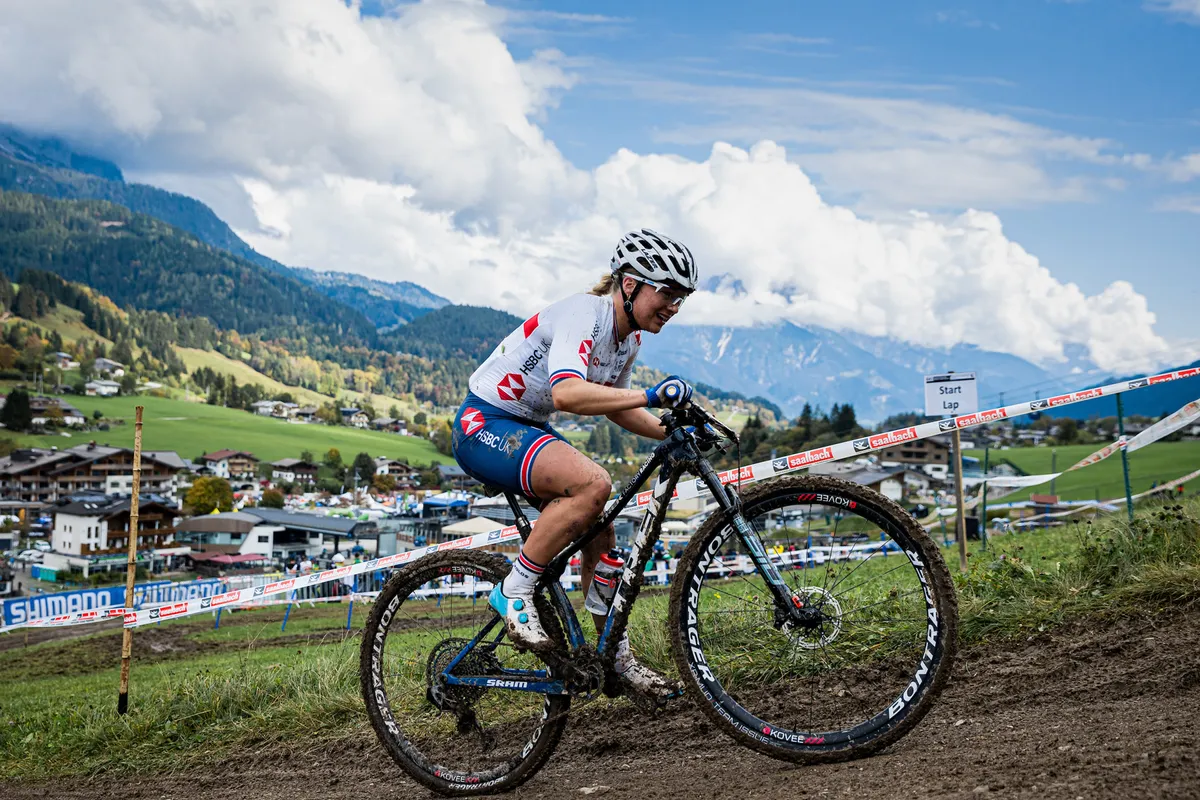
Your power-to-weight ratio is important for success in cross-country, so naturally riders want the lightest equipment possible, while still being able to withstand the demands of hard riding or racing.
You might find a top-spec hardtail weighing in at under 8kg, which is incredibly impressive considering what these bikes are capable of. More affordable models typically weigh anywhere from 9 to 11kg.
When it comes to full-suspension bikes, a top-spec model could come in just under 10kg, with more affordable bikes weighing anywhere from 12 to 14kg.
While overall bike weight is a factor, especially if you’re an elite racer, there are much better and cheaper ways to get faster when you’re starting out – such as training.
So, try not to get too hung up with weight early on. There’ll be plenty of time to start counting those grams and emptying your wallet as you progress gradually through the ranks.
Wheel size
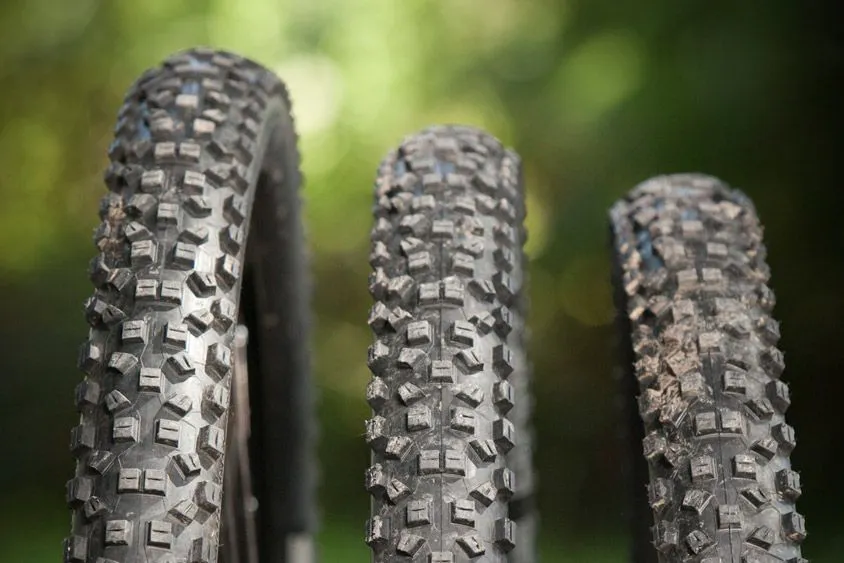
On modern cross-country bikes, nearly every model will feature 29in mountain bike wheels.
While 29ers took a while to truly catch on, they’re now considered a smart option for many riders, thanks to their ability to roll over obstacles more easily, and arguably provide better pedalling speed.
In some circumstances, such as for particularly short riders, it may be best to go for smaller 27.5in wheels, but for most people, 29ers are the way to go for XC bikes.
If you want more information, we’ve got a guide to mountain bike wheel sizes, covering the pros and cons of 26in, 27.5in and 29in wheels.
Tyres

Tyre choice comes down to a balancing act between rolling resistance (speed) and grip, so the best cross-country tyres will usually have smaller tread blocks than trail or enduro tyres.
XC tyres may also have thinner sidewalls to save weight, and in some cases be made out of a slightly harder compound, which can roll faster.
However, remember a harder compound will, in theory, provide less grip, and thinner sidewalls offer less puncture protection. As we said, there’s always a compromise to be made somewhere.
Cross-country tyres were traditionally much narrower than trail or enduro tyres – but, as the sport has changed, the tyre sizes have increased, so you’ll now find cross-country tyres in the 2.2in to 2.4in range.
How much travel do you need?
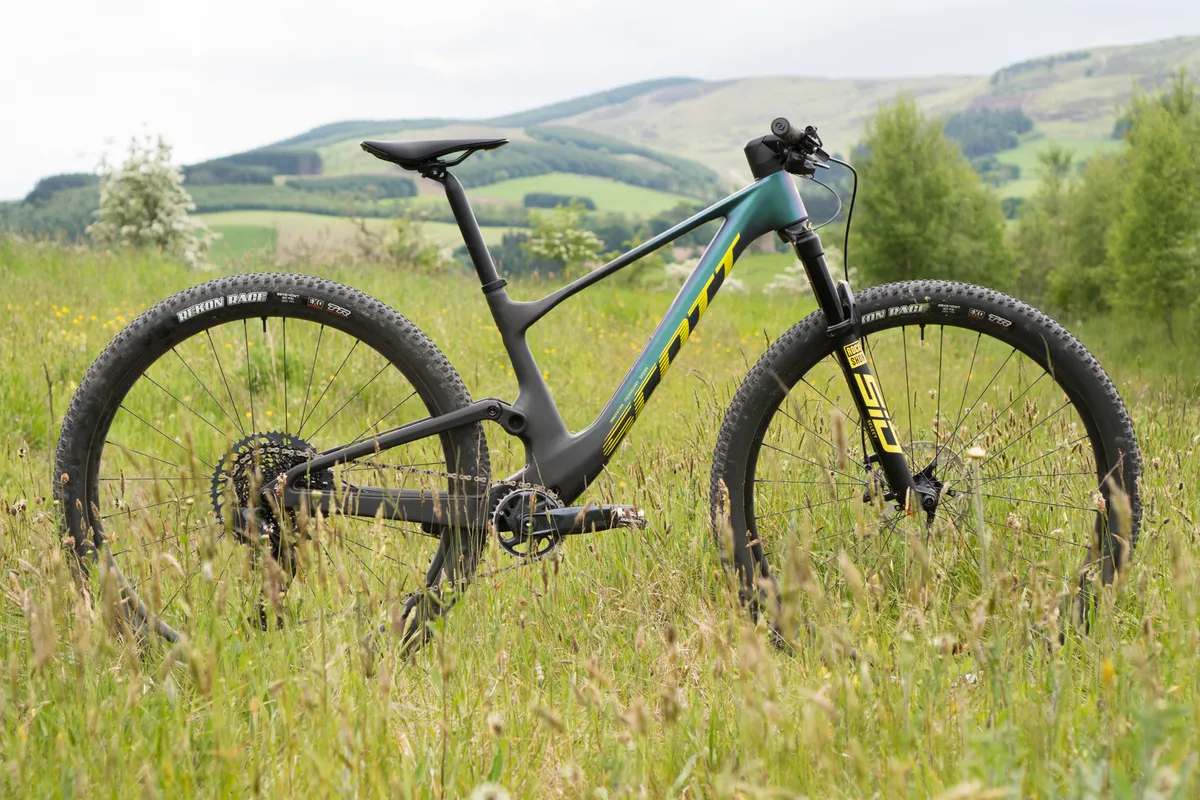
When it comes to suspension travel, nearly all cross-country bikes will have 100mm of front and rear travel.
As we’ve already mentioned, downcountry bikes up this travel a little, with around 110-115mm at the back and 120-130mm on the front.
That said, it’s also worth bearing in mind how the Scott Spark, a pure XC race bike, now has 120mm at both the front and rear. As we said, XC race bikes are changing.
Scott knows a thing or two about making great cross-country bikes – the outgoing Spark was hugely popular on the XC scene – so it’ll be interesting to see if longer travel on dedicated race bikes will start to catch on.
Gearing
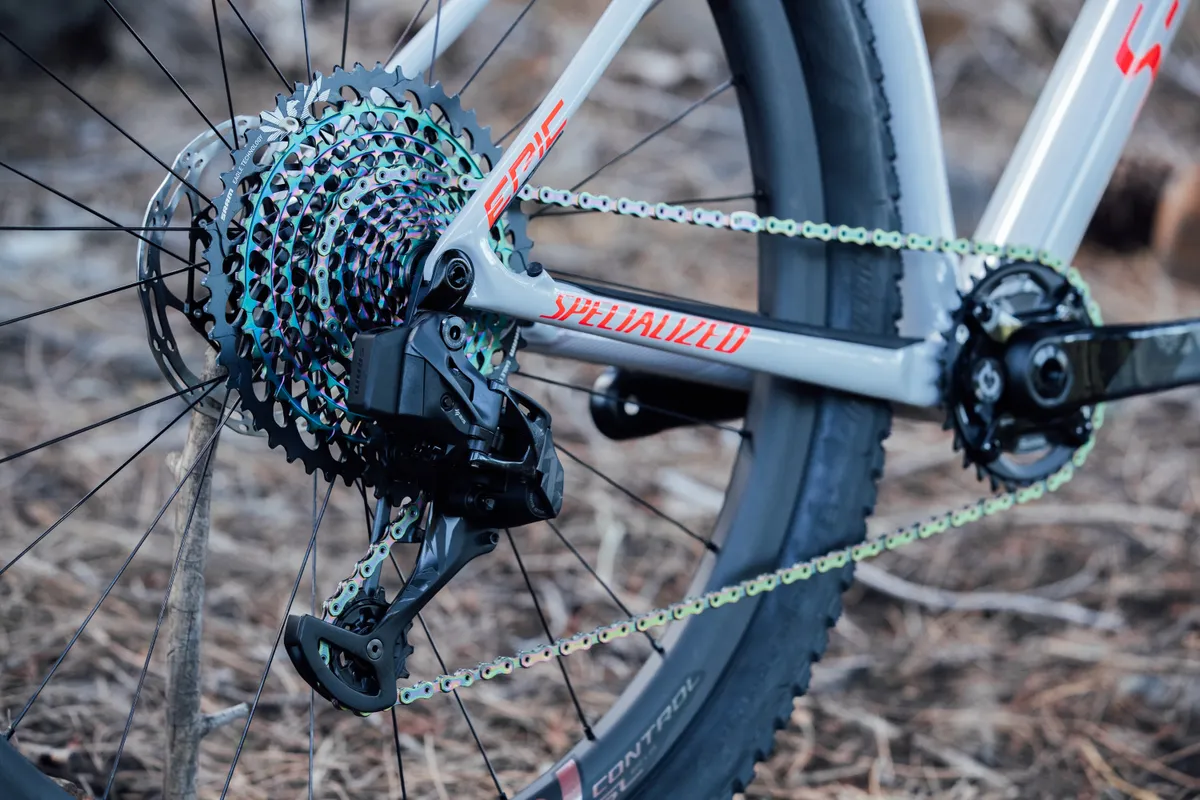
Just like the best trail mountain bikes, cross-country bikes have almost exclusively moved to 1x drivetrains, with Shimano and SRAM mountain bike groupsets dominating the market.
1x drivetrains have one chainring at the front (removing the need for a front derailleur), with a wide-ranging 11- or 12-speed cassette at the back to still provide a big spread of gears.
Stronger professional riders have been known to run up to a 38-tooth chainring at the front. However, at the amateur level most riders will normally go for a 32- or 34-tooth chainring instead.
Cassette sizes usually range from a 10- or 11-tooth sprocket for the hardest gear to a 51- or 52-tooth sprocket for the easiest climbing gear.
This is a pretty big spread and should keep those legs turning up the steepest of climbs.
Brakes
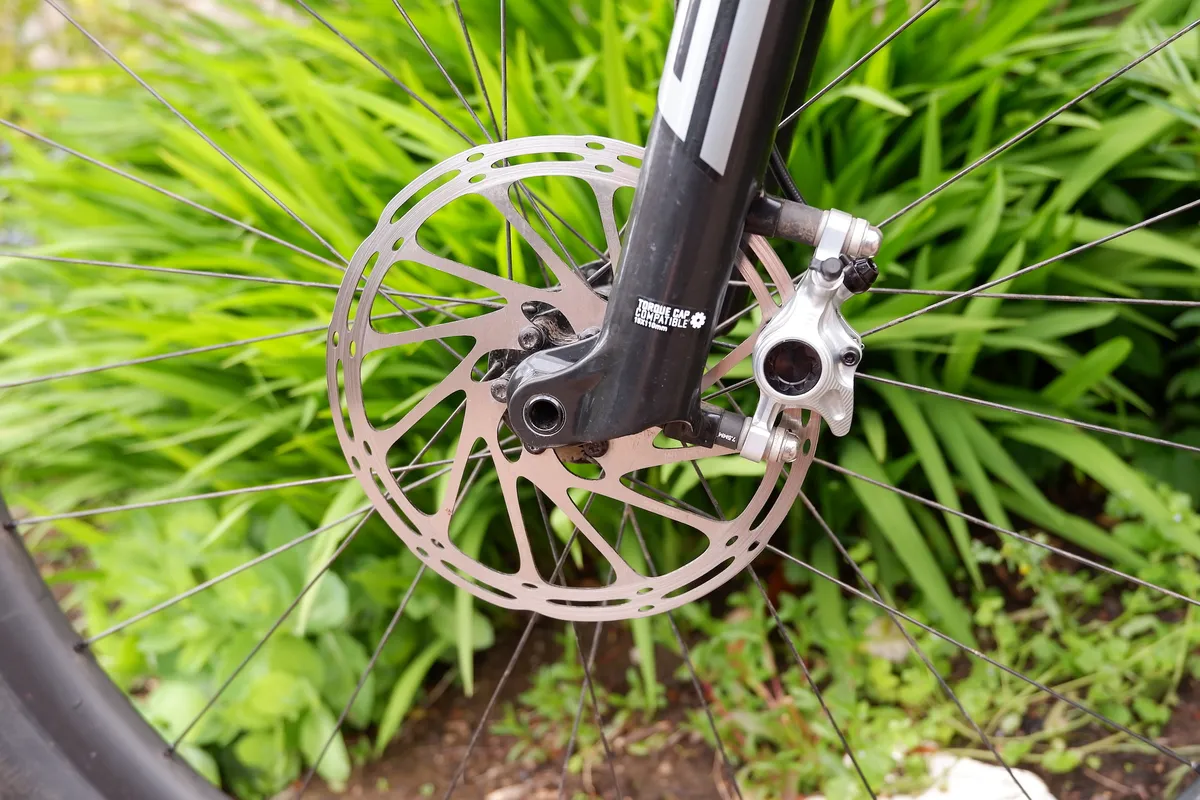
Cross-country bikes will commonly be fitted with lightweight disc brakes. These will have smaller rotors, with most riders opting for 160mm front and rear.
Some particularly powerful riders may pop a 180mm rotor on the front, and the lightest riders may go for a 140mm on the rear, but in general, 160mm is what’s seen most commonly.
XC disc brakes won’t be quite as powerful as the brakes you’ll find on an enduro bike, but they’re more than capable for the job at hand.
On the most affordable bikes, these may be cable-actuated disc brakes, but from the mid-range and up, you’ll find hydraulic mountain bike disc brakes on all cross-country bikes.
Dropper posts
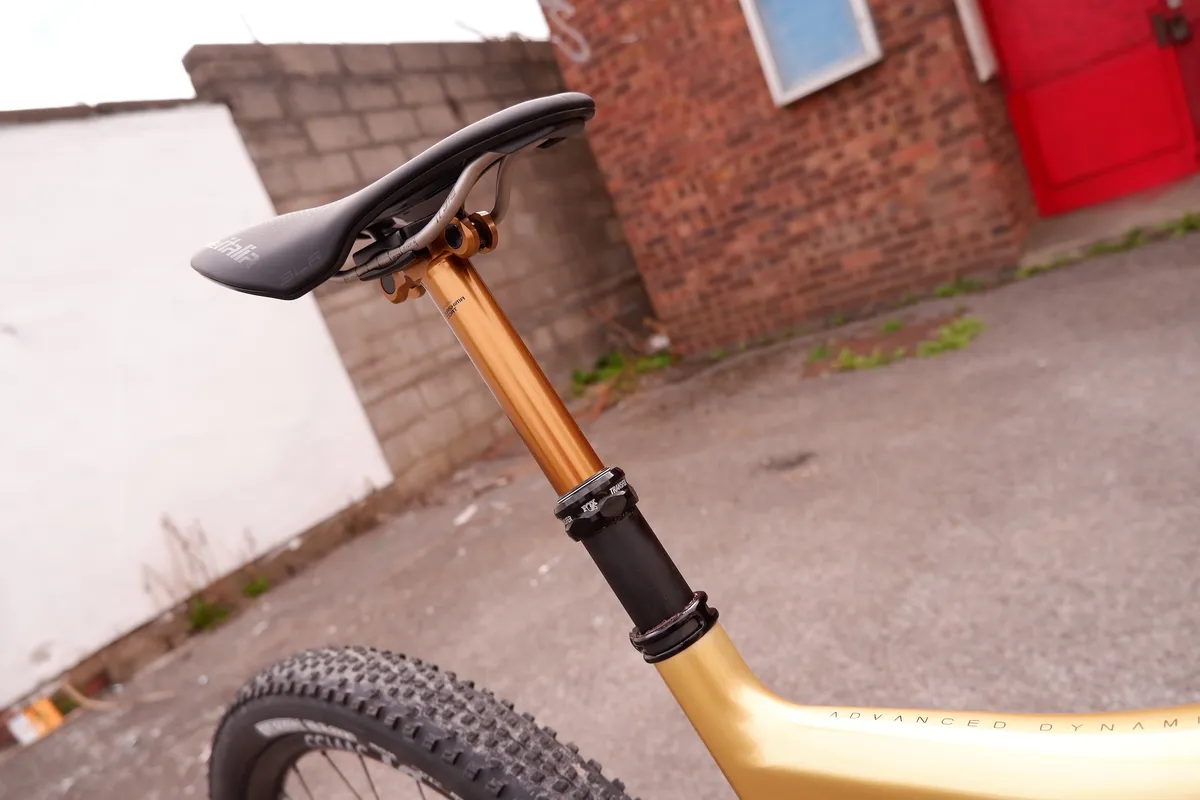
The best dropper posts enable you to lower your saddle height at the touch of a button or lever mounted on your handlebar. This helps with descending because you’re able to move the bike and your weight around more easily.
Droppers were once unheard of in cross-country racing because most riders thought they were too heavy and unreliable. But as the sport and dropper technology has progressed, they’ve become more popular, with many pro riders making the switch.
Dropper posts aren’t necessarily cheap, but if you can afford one, or your bike already comes with one, they can be a great addition for a relatively small weight penalty (around 400 to 500g).
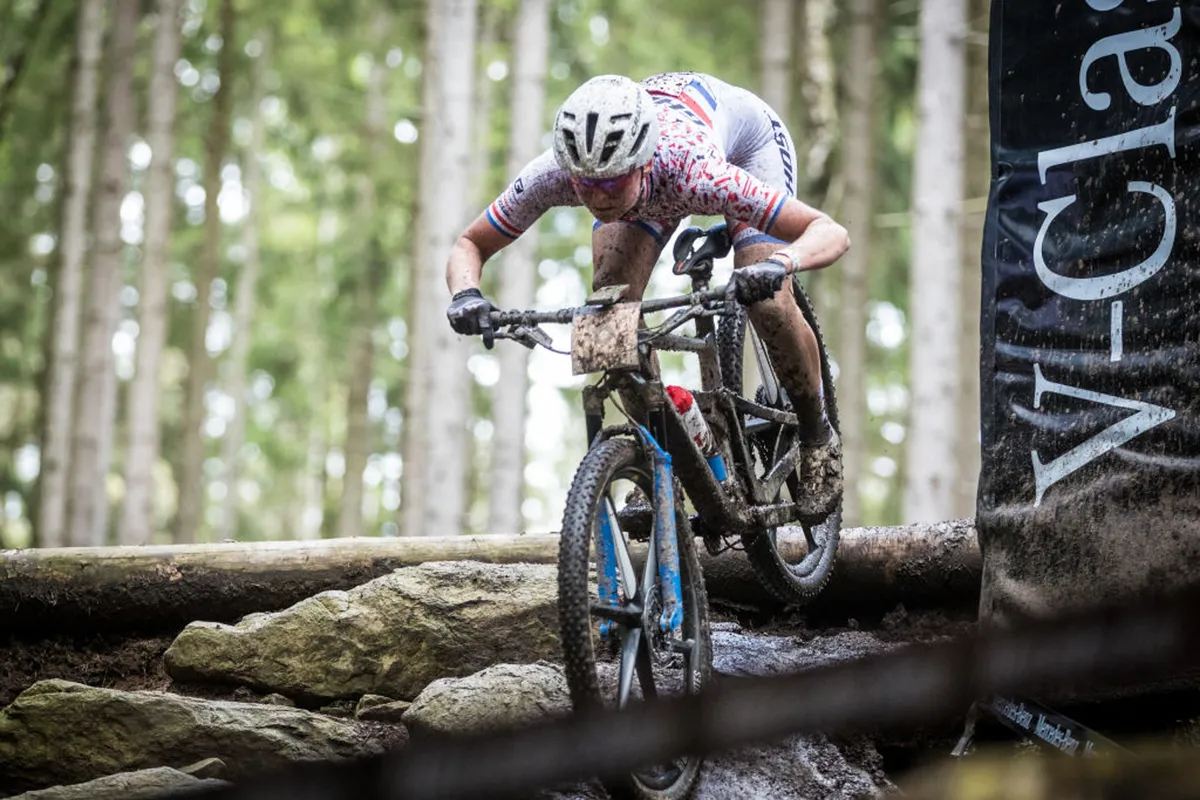
For many riders, adding a dropper post can really increase the descending capability of a bike, which is why it’s one of the smartest mountain bike upgrades you can make.
How much should you spend on a cross-country bike?
You can spend anywhere from £500 all the way up to £10,000 on a cross-country bike. While elite riders may want the best money can buy, most keen amateur racers will usually spend between £2,000 and £5,000 on their XC bike.
That said, more affordable bikes in the £750 to £2,000 range are still excellent options for beginners or riders looking to save money.
As ever, it’s a case of weighing up your priorities when it comes to price, component choice, weight and so on, before taking the plunge.




